The 7 Best Trout Baits (And How To Fish Them)
UPDATED 03 NOVEMBER 2023
by Robert Ceran
If you’ve ever tried to catch trout, you’ll know how hard it is to find the right trout bait for every situation.
Baits that get bit on every cast one day, don’t work at all on another fishing trip.
That’s why it’s best to have a good selection of different baits for trout whenever you go fishing, so you can try out several options until you find a winner.
In this article I’ll walk you through the top 7 trout baits that will catch trout in almost any situation.
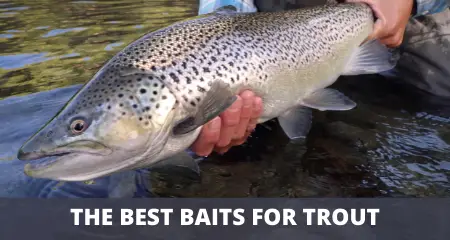
I’ll also go over why certain baits work better than others depending on the circumstances, and will also cover the best methods for catching trout with these baits.
What is the best bait for trout?
The best trout bait is anything that closely resembles the natural food eaten by trout. The 7 best trout baits are:
- Fish eggs
- Live bait
- Beads
- Flies
- Minnows
- Lures
- Berkley Powerbait
Each of these baits comes in a variety of options, and we’ll cover those in more detail below.
But keep in mind that the best trout bait depends on what the trout are keyed in on at any given time, and this can vary a lot from season to season (or even from day to day, depending on weather changes).
Because of this, you need to keep a close eye on the feeding preferences of the trout in your fishery, and keep track of how they change over time, in order to choose the right trout bait.
For example, worms are one of the best trout baits after a spell of rain during the spring or summer, since rain washes nightcrawlers out of the soil and into rivers at this time of the year, where trout love to eat them.
However, during a dry spell at the peak of summer, you probably won’t have much luck using a worm as trout bait, since there are no worms being washed into the water at this time, and thus the fish aren’t keyed in on them.
So it’s best to always have a selection of different trout baits and artificial lures whenever you go fishing for trout, since that allows you to test different trout baits until you find the best option for any given day.
PowerBait is an exception to the other trout baits on the list above, since it doesn’t really resemble natural food eaten by trout in the wild, but is nevertheless a great trout bait for catching hatchery trout.
The reason for this is that PowerBait resembles the food that hatchery trout were accustomed to receiving in the trout farm before they were released into a lake or river.
How to fish with trout baits
It’s important to keep in mind that in addition to using the best baits for trout, you need to make sure to fish your trout bait in the best spots, as well as using the best fishing technique and bait presentation in order to achieve good results.
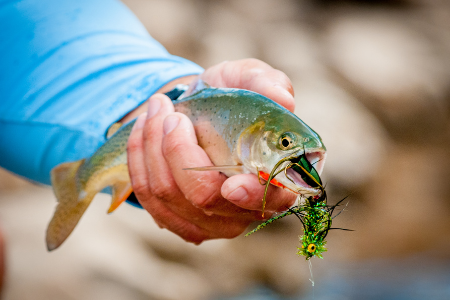
Why is this so important?
Well, even if you’re using a perfect trout bait, you won’t catch a lot of fish if you don’t present your bait correctly, by using the best tactics and rigging.
For more details on correct bait presentation, check out our in-depth guide on the best trout fishing setup.
This is especially true if you’re fishing for wild trout in streams and rivers, since they are much harder to catch than stocked trout in a pond.
If you’re fishing for native trout in rivers or streams, the two best options for presenting your trout bait effectively is with a fixed bobber rig, or a drift rig with a long leader between the hook and the weight.
Either of these is great for using the current to drift your trout bait into the feeding lanes of trout.
Fish eggs are one of the best trout baits
Fish eggs are one of the best natural baits for trout, as they are a high-protein food source, and occur naturally in rivers and streams.
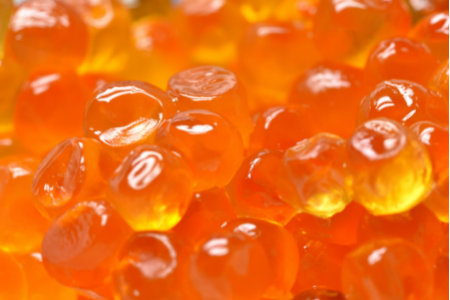
During the spawning season, it’s common for fish eggs to be washed downstream with the current, and trout love to feed on this highly nutritious food source brought to them by the current.
If you want to use fish eggs as trout bait, you’ll need to choose from several options, including single salmon eggs, loose trout eggs, or spawn sacks or roe bags (containing either salmon or trout eggs).
Fish eggs are great trout bait for catching all species of trout, including brown trout, rainbow trout, and brook trout, cutthroat trout, as well as salmon, steelhead, and char. All of these salmonid species feed on fish eggs.
And as you’ll see further down, beads actually resemble imitations of fish eggs, which explains why they are another great bait for trout.
Loose eggs
If you use loose eggs as trout bait, you’ll need to tie your own spawn bags in order to keep them on your single hook effectively.
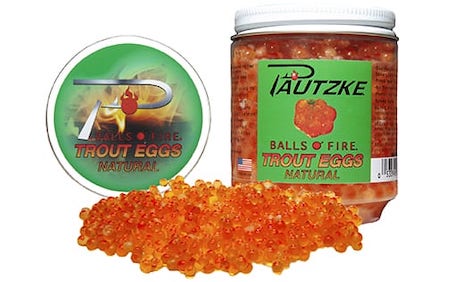
This is a great option if you want to vary the size of the bag, and can be useful in some situations where the fish prefer a smaller or larger spawn bag.
You can also use eggs from freshly caught fish, such as any species of trout and salmon, or eggs from freshly caught suckers as trout bait.
However, a more convenient option is to buy them at your local bait shop, or online.
When buying loose eggs, it’s important to make sure they are good quality, as some brands are not very good, due to being treated with chemicals or oils that don’t smell good to trout.
One of the best brands of loose eggs to use as trout bait are Pautzke Balls O’Fire trout eggs.
The Pautzke Balls O’Fire trout eggs come in a variety of colors, which are all great for catching trout.
Another great option is to get the Pautzke Balls O’Fire salmon eggs, which are bigger than trout eggs, and are a great trout bait if you want to bait your egg hook with a single egg (although you can also tie them as spawn bags).
Pre-tied eggs
If you don’t want to tie your own spawn bags, you can buy pre-tied spawn bags from tackle shops or online stores.
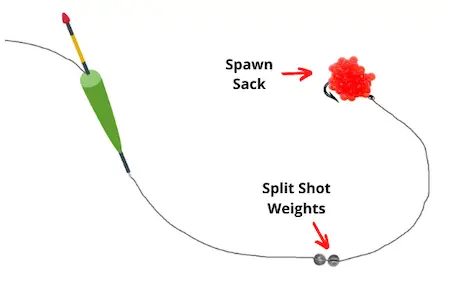
Similar to loose eggs, you should be careful to avoid low quality brands that produce a bad scent in the water.
I recommend the spawn sacks by Superior Outfitters, which are pre-tied spawn sacks of Coho salmon eggs.
You can get them in a selection of colors, which all work great for catching trout.
Using skein as bait
Skein is rarely used as a trout bait, but can be more effective than any other types of fish eggs, especially in heavily pressured waters.
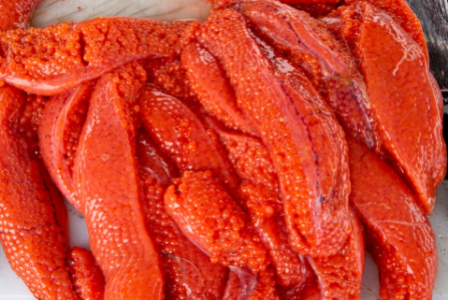
Basically, skein is immature fish eggs that are still inside the membrane that contains them inside the body of a female fish.
The best thing about skein is that it produces a stronger scent in the water than mature fish eggs, due to the fact that it comes from inside the body of a fish.
You can use skein from pretty much any species as trout bait, including trout, salmon, and steelhead.
If you don’t have access to fresh skein from a recent catch, a great alternative is to use cured skein from brands like Pro-Cure and Pautzke.
My favorite option when using skein as trout bait is the Pro-Cure salmon roe, which is individually packed into durable clusters that are easy to keep on your hook.
You can also get the Pro-Cure whole skein, which is vacuum packed in order to preserve it.
Finally, you can also cure your own skein with the right curing products.I like the Pautzke Balls O’Fire fish egg cure, or the Pro-cure bait cure, which both work very well to cure skein.
When you want to use skein as trout bait, it’s great to use small pieces of skein threaded onto a small hook (if the skein is tough enough to stay on the hook).
However, the best option is usually to tie the skein into small spawn bags, which are easier to keep on your hook.
How to use artificial eggs as trout bait
Since fish eggs are so effective for catching trout, another great option is to use plastic eggs as trout bait.
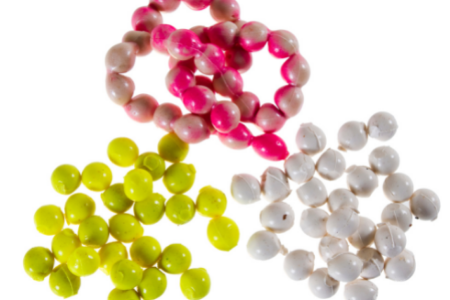
These can be either made of soft rubber (such as Mad River Scented Eggs), or a soft dough-like material (such as Berkley Gulp eggs).
Artificial eggs all have in common that they resemble natural fish eggs, and are soft enough to be threaded onto a hook.
This distinguishes them from beads, which are hard, and have to be rigged onto your fishing line instead.
In order to make imitation eggs more attractive as trout bait, they are usually colored and scented.
They are used either as plastic single eggs, or as egg sack imitations, resembling real spawn bags.
Plastic roe sacs are usually best for catching bigger trout, and should be used with a slightly larger hook.
As already mentioned, Berkley makes several great egg imitation baits for trout, ranging from Gulp single eggs to floating magnum Power Eggs.
I also recommend the Pautzke Fire Balls, as well as the Plastic Single Eggs from Atlas.
Another advantage of using imitation egg patterns as trout bait is that you don’t have to mess around with real eggs, and you can also use them to catch salmon and steelhead, since they also love to feed on eggs that are washed downstream with the current in rivers.
Fishing with beads as trout bait
Beads are another great artificial egg imitation bait, but they are rigged differently than soft plastic eggs.
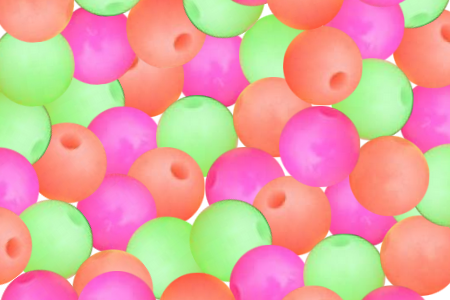
Beads were initially used by steelhead anglers, but they work equally well for catching trout in streams and rivers.
The reason why beads are such a great trout bait is because they resemble a single fish egg, which represents an enticing meal for any trout.
Beads are made of hard plastic or glass, and have a hole in the middle, which is used to attach them to the fishing line about 1 to 2 inches above the hook.
While this setup seems a little counterintuitive, experience has shown that it results in a lot more successful trout hookups than if you rig the bead right next to the hook.
The best technique to fish a bead for trout is either with a bottom bouncing rig or with a bobber rig, which allows you to use the current to float your bead into the trout feeding lanes in rivers and streams.
If you’d like more details on how to set up a bead rig, check out our guide on bead rigs for steelhead. You can adapt all the rigs covered there for trout fishing, simply by using smaller sizes of hooks, weights, and bobbers.
The best size bead for trout is between 6 and 8 mm (which is significantly smaller than the sizes used for steelhead and salmon).
The best thing about beads is that you can get them in many sizes and a variety of colors, which allows you to test different ones until you find the patterns that catch most fish.
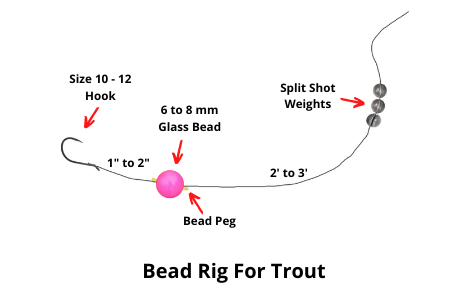
Many trout anglers prefer glass trout beads because these are heavier, making it easier to get them down to the bottom (which is often the prime strike zone for trout).
In my experience the best brand of glass trout beads is Creek Candy Bead Company.
Finally, you should also invest in a good bead box to store your beads and sort them into different types, sizes and colors.
It’s best if you can close off every compartment, so that the beads can’t fall out if you ever knock over your box.
The best live baits for trout
Live baits are a very diverse group of baits, and can be one of the best options for catching trout.
Since trout feed on a wide range of small invertebrate animals that live in and around rivers, live bait can be one of the best trout baits, given the right circumstances.
Another great option is to use very realistic imitations of these live baits, which we’ll also cover further down. Now let’s take a look at the best live baits for trout, and how to fish them.
Worms as trout bait
Worms are a traditional trout bait that are well-known by every angler, and continue to be one of the best baits for trout under the right conditions.
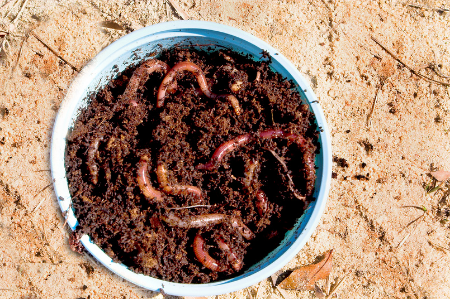
Worms work best as trout bait in spring and summer during, or after, rainy spells. This is because the rain washes worms into the water, where they make a highly nutritious meal for trout.
In other words, trout expect to encounter worms in the water during these times, but not if there hasn’t been any rain for weeks.
The most commonly used worm for trout is the nightcrawler, which is also known as dew worm, earthworm, or garden worm. Night crawlers are very big, and reach a maximum size of 7 to 8 inches.
Since fully grown night crawlers are too big for most trout, they should be broken down into 2 to 4 inch pieces before you put them on your hook.
A better alternative is to use garden worms (also called red wigglers), which are slightly smaller, and reach a maximum size of 5 inches.
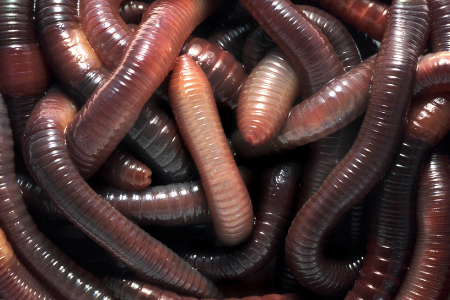
In general, it’s best to use worms for trout that are between 2 and 4 inches long, and you’ll find that you can catch even very large fish on this size worm.
And the great thing is that you’ll also catch average sized fish this way.
One problem with worms is that they tend to bunch up into a tight ball on your hook, which is not at all attractive to the fish.
Because of this it’s best to use bait-holder hooks that allow you to keep them bunching up.
Grubs and maggots
Apart from worms there are several other types of live bait that are readily obtained from tackle shops, including maggots, wax worms, and mealworms.
If you can’t find these in your tackle shop, you can also get them from pet shops, which sell them as food for birds and reptiles.
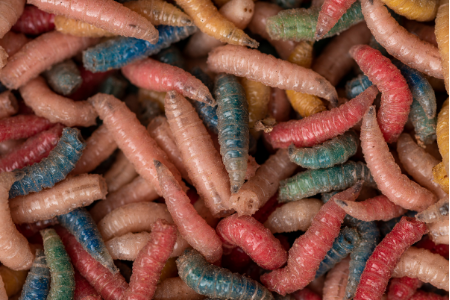
The best thing about using live grubs and maggots as trout bait is that they produce a natural scent in the water that attracts trout.
I’ve found they work well both during the warm season and are also one of the best baits for trout ice fishing.
Maggots are normally white, but in tackle shops you can get them in several bright colors, including red, orange, and green.
These colors are added to the food of the maggots, and die them effectively both on the outside and inside.
Since maggots are small, you can add three or four of them to your hook. I suggest testing several different maggot colors for trout, until you find the best one that catches most fish.
If you don’t like handling live maggots or worms, you can also opt for plastic imitation grubs, such as Power Wigglers and Lil Hellgrammites.
Similar to beads, you can fish maggots or grubs on a single size 10 or 12 hook, either with a bobber rig or a bottom fishing rig, and use the current to drift them to feeding trout.
Leeches
While many people know that leeches make a great bait for walleye and bass, only few anglers are aware that leeches are also a good trout bait, which are naturally found in and around creeks and streams.
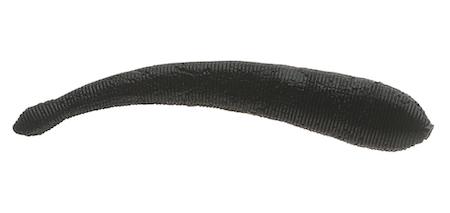
So especially during the summer months, leeches make a killer bait for trout.
The best option to get live leeches is from your tackle shop, but failing that you can also opt for using artificial imitation leeches, such as the Berkley Gulp leeches.
Again, these are most popular among walleye anglers, but trust me, you should give them a try for trout as well.
You can fish both live leeches or artificial leech baits with a bobber rig, and use that to float it into the feeding zones of trout.
Live leeches should be hooked through the head with a small size 10 or 12 hook, which gives them plenty of freedom to wiggle around in the water, which is great for triggering bites.
Shrimp
While trout love to eat shrimp, it can be challenging to get fresh shrimp to use as trout bait.
However, few beginners know that you can also use salad shrimp to catch trout, and this is a great natural bait to try out in the bodies of water where you fish.
Unless the shrimp are very small, it’s usually best to use a single shrimp on a size 10 or 12 hook to catch trout, and fish it either under a float, or with a bottom fishing rig.
Another great option is to add shrimp scent to your soft plastic baits and lures, since this is a great attractant for trout.
Crawfish (aka crayfish)
Crawfish (or crayfish, depending where you come from), are commonly found in most trout rivers, and are a popular food source for trout.
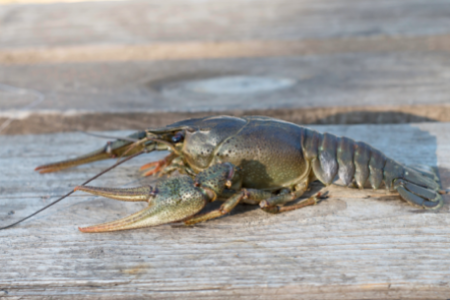
However, unlike largemouth bass, which can eat fully grown crawfish, trout mostly eat the small ones that are between 1 and 2 inches long.
If you can get small live crawfish under 2 inches, you can hook them through the tail and present them with a bottom fishing rig or a bobber rig.
However, since you may prefer not to mess around with real live crawfish, another great option is to use imitation crawfish lures.
Imitation crayfish lures for trout are usually soft plastic trout baits, or small crankbaits, both of which can be deadly when fished the right way.
Similar to real crawfish, you’ll want your imitation crawfish to be presented close to the bottom in order to catch trout, and you can do that with either a bobber rig, or a bottom fishing rig that allows you to drift your imitation crayfish along the bottom.
Another great option is to use a jig head or ned rig with a soft plastic crawfish as bait, and hop this along the bottom just like a real crawfish moving through the water.
The best thing about using artificial crawfish imitation baits is that you can store them indefinitely in your tackle box, which is not the case with live crayfish.
Dragonfly larvae (and other aquatic insects)
Aquatic insects and insect larvae constitute one of the main food sources for trout (including larger fish) during the entire year, which makes them a great bait option.
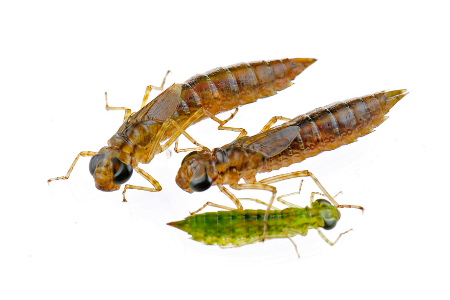
The best example of this are dragonfly larvae, which can be between 0.5 and 2 inches long, and represent a highly nutritious meal for any trout, including the biggest trout.
Dragonfly larvae are common along the shores of most rivers and streams, as well as alpine lakes.
They can usually be found underneath logs and rocks, and by turning these over you can quickly catch a few dragonfly larvae, which makes them a great fall-back bait for trout if nothing else is working.
If you don’t want to catch them yourself, you can also get them at many tackle stores, which sell aquatic insects as trout bait. The best way to fish these is with a size 12 hook under a float, or with a bottom fishing rig.

If trout are keyed in on eating aquatic insects, you won’t have much luck with any other live baits or lures. So you really need to pay attention to this, and switch bait if necessary.
Just by doing this you’ll be able to catch a lot more fish than other anglers that always stick to the same trout baits.
Grasshoppers and crickets
Crickets and grasshoppers make good trout baits during the peak of the summer, since they are a natural food source for trout at this time of the year.
It’s common for a grasshopper to fall into the water during the summer, and when it does, there’s always a hungry trout to snatch it up.
If you want to use grasshoppers and crickets as bait, you can either catch them yourself, or you can get them from pet stores.
Use a single small hook poked through the back, and let them drift along the surface of the water, which is exactly where trout would expect to encounter a real cricket or grasshopper.
And similar to all other types of live bait, you can also opt for imitation crickets, such as the Berkley Gulp Crickets.
Minnows (and other baitfish)
Trout are aggressive predators, and other fish form a large part of their diet.
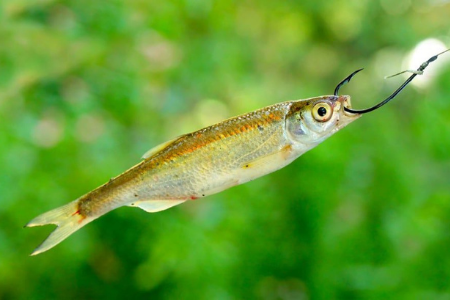
Because of this, minnows and other small fish can make great trout baits, and you can fish them with similar rigging and tactics as other live baits.
The easiest way to get live minnows is from a tackle shop, which almost always sells minnows or other live fish.
Another great option is to catch your own minnows with a minnow trap, and this comes with the added benefit that you can use the same type of minnows that trout are accustomed to feeding on in a particular river or stream.
The best way to hook a live minnow is through the lip with a size 10 or 12 hook, and then use a bottom bouncing rig or under a float to drift it with the river current.
If you don’t like using live minnows as bait you can also take advantage of a wide variety of soft plastic imitation minnows.
The advantage of using imitation minnows is that you can get them in almost any color, including shad, emerald shiner, young trout, or smelt.
Artificial lures for trout
Strictly speaking, lures are not bait, but since many lures closely resemble natural trout bait, the distinction between them is fluid.
At the end of the day, you just want to have something in your tackle box that will catch trout for you. In addition, lures are the number one option when trolling for trout.
That’s why I decided to cover the most important trout lures here as well.
Flies
Flies are among the best artificial baits, and the best thing is that you don’t have to use a fly fishing gear in order to fish them for trout.
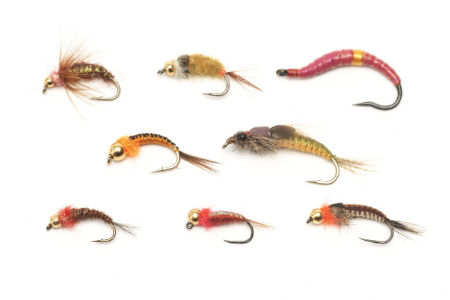
In fact, one of the easiest ways to fish flies is with light spinning gear, and drift them downstream with the river current, using a bottom fishing rig or bobber rig.
The great thing about using flies as bait is that they are incredibly versatile, and can be used in both deep water and more shallow waters.
There are flies that imitate various types of insects, nymphs, minnows, fish eggs, insect larvae, crayfish, and leeches.
This gives you a lot to work with when the fish aren’t biting on more conventional trout baits.
Jigs
Since trout often feed close to the bottom, jigs are great for catching them, as they are easy to fish deep in the water column.
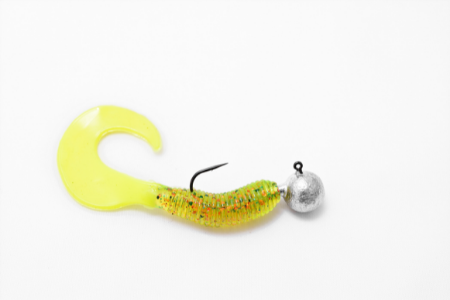
This allows you to keep your lure in the strike zone of the trout more effectively, especially in deeper waters.
You can use the same types of jigs that bass anglers throw for largemouth bass, but in general it’s best to downsize the jigs for trout.
The most common jigs are tube jigs, bucktail jigs, twister tail jigs, and creature jigs. Large tube jigs make a killer bait for lake trout.
Another great option is to use a simple jig hook, and add a variety of jig trailers as bait, such as plastic crawfish, minnows, worms, or grub tails.
This gives you the option of using soft plastic trout baits resembling the food that they are keyed in on at the time.
When fishing jigs, always make sure to let them sink all the way to the bottom, and then retrieve them with a jerking motion, raising and lowering your trout rod tip as you do.
This results in an enticing lure action that trout have a hard time resisting.
Crankbaits and jerkbaits
Small crankbaits or jerkbaits are great lures for trout, since they imitate a small bait fish that moves erratically through the water.
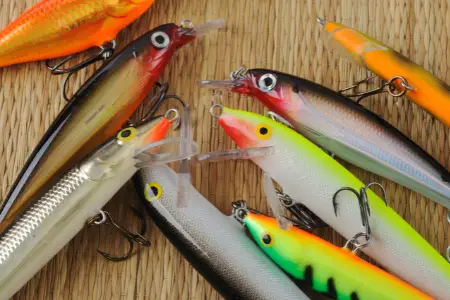
In fact a 2 inch Rapala Countdown Minnow is one of my all time favorite trout lures to throw in both rivers and lakes, and I never fish for trout without a few of those in my box.
Another great option is the Smithwick Suspending Rattlin Rogue, which is a great jerkbait to throw for big brown trout.
Topwater lures
Topwater lures are a great option if you want to fish for trout at night. This is because these lures are designed to create a lot of commotion at the water surface, and trout can key in on this with their lateral line sensory organ.
Also, while trout normally feed at the bottom of the water column during the day, at night they come closer to the surface, which puts topwater lures right in the strike zone for nighttime trout fishing.
Because of this, topwater lures are great baits that consistently catch trout at night, especially during the peak summer months.
Another fact that surprises many anglers is that a shy trout can turn into an aggressive fish at night, which means you can use big topwater lures (up to 5 inches) as a great bait for night fishing.
The best topwater lures to use for trout are poppers, spooks, and mouse imitations. I caught my personal best brown trout at night on a big topwater mouse.
Inline spinners
Inline spinners are great trout lures that have been used for many decades, but continue to catch fish reliably to this day.
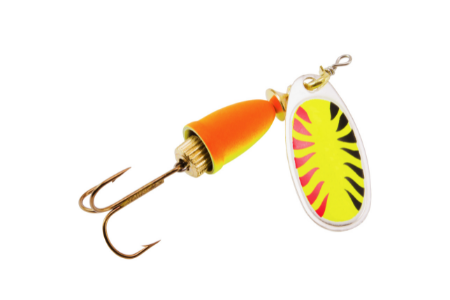
The most famous ones are Rooster Tails, as well as Panther Martin and Mepps Aglia spinners, which are always worth giving a try.
In-line spinners are a great search bait, and whenever I start fishing in a new trout fishery, I start by throwing a Panther Martin while systematically moving along the lake shore or river bank until I get a strike, or notice a fish following my spinner.
If you see a trout following your Panther Martin, but without eating it, try switching to a live bait or a soft plastic bait instead. Inline spinners are great for catching aggressive feeders, but they’re not so good for finicky fish.
Pressured trout rarely fall for an inline spinner, and in that case it’s usually better to switch to a finesse bait presentation.
Finally, another situation where spinners come in handy as bait is in dirty water, since their rotating blade creates a strong vibration in the water that trout can detect with their lateral line even if they can’t see it.
Soft plastic baits
Soft plastic baits are great because they come in so many different shapes and sizes, and can be made to resemble pretty much anything that trout like to eat.
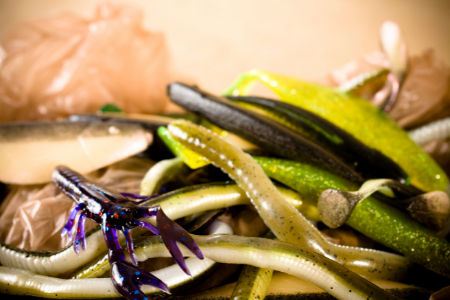
In addition to this, their soft texture makes them look very natural, and if you add scents into the mix, they can be deadly for catching trout.
Soft plastics are also great finesse trout baits, since they can be fished with extremely lightweight setup for trout. In fact, I like to use a 2 or 4 pound test main line for this, which is practically invisible in the water.
However, if there’s a chance of hooking into a bigger trout or steelhead, you may want to go slightly stronger with the main line, and tie that to a 2 to 3 foot fluorocarbon leader.
Fluorocarbon is the most expensive type of fishing line, but is the best fishing line for catching finicky trout.
In addition to using a light tackle, I also use relatively small hooks with soft plastic trout baits, to make sure the trout can’t see it.
When fishing with soft plastics, it’s important to maintain a little tension on the line at all times, so you can feel a bite.
However, if you’re fishing in a strong current, you may need to use additional weight to get your soft plastic rig down to the strike zone.
This makes it a little harder to feel your rig through the rod, but with a little practice you’ll still be able to feel bites.
Fishing with plastic worms for trout
Since worms are such a great natural trout bait, this explains why artificial worms have become one of the best baits for trout in recent years.
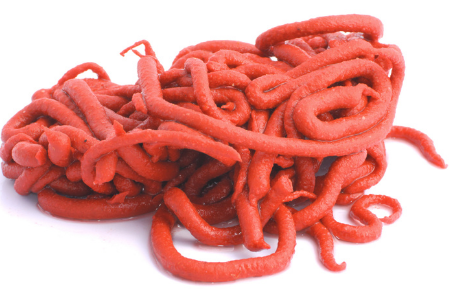
A well-presented plastic worm not only looks extremely realistic, but you also have the option of choosing one in a bright color. This can trigger bites when nothing else works, especially in cloudy water with low visibility.
For example, a 5 inch bubblegum pink worm is often the best color choice for big steelhead, and also catches big salmon.
Another advantage of using plastic worms is that they don’t come off the hook as easily as natural trout baits, and you can easily pinch off an inch or two if you need to shorten it.
I think you’ll find that plastic worms work just as well as natural worms in moving water, since trout don’t have a lot of time to examine your worm before deciding to commit to eating it.
If you’re worried about the lack of scent on your bait, you can easily add trout-attracting scent to it, which further improves its performance (more on that below).
When it comes to the best methods for fishing plastic worms for trout, the best way to fish them is with drift fishing (either using a float or a bottom fishing rig to bounce them along the bottom).
If you’re fishing for steelhead trout in strong current, another great option is to fish a plastic worm with a plunking rig for steelhead, which stays in the same place while you place your rod in a rod holder and wait for steelhead to come by.
One of the best brands of plastic worms is the Trout Magnet, which can be rigged up like a real worm, or fished with a jig head or a ned rig.
The Trout Magnet also comes in various other shapes, sizes, and colors, so you can experiment until you find the best option for your body of water.
Apart from the Trout Magnet, I also like the Berkley Gulp Worm, as well as the Angleworm, which is a little smaller and works great in small streams.
Berkley Powerbait is one of the best trout baits
Berkley makes a whole range of bait products that are great for trout fishing, but their most famous trout bait is Powerbait, which is a soft dough that can be shaped into a ball that you can put on your hook.
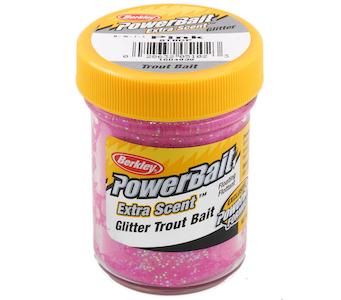
Powerbait is the best bait for rainbow trout, especially when it comes to catching stocked trout.
This is because its texture and scent resembles that of trout pellets, which is the food that trout are used to eating in hatcheries.
Berkley Trout Nuggets closely resemble trout pellets, and are the best option for catching freshly stocked rainbow trout.
If you happen to know the times and locations where hatchery trout are released, you can catch lots of fish with this trout bait.
Powerbait comes in a wide variety of bright colors, and you can also choose between different scented versions, such as garlic scent (which works extremely well for trout).
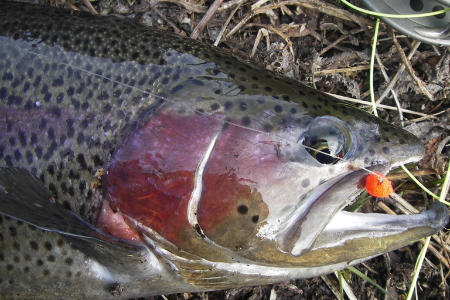
Another great thing about Powerbait is that it floats in the water, and if you’re using a bottom fishing rig, you can use this to present your trout bait 1 to 3 feet above the bottom.
Pro tip: if you notice a lot of weeds growing on the bottom, you can increase the length of your leader. This will allow the hook baited with Powerbait to float above the top of the weeds, which is exactly where trout like to feed.
Due to the soft consistency of Berkley Powerbait, it’s best to use it with a treble hook, since it stays better on the hook that way.
Additional Berkley trout baits that are great for trout fishing are Berkley Mice Tails, Berkley Power Honey Worms, and Berkley Trout Nuggets.
Each of these has a different shape, color, and texture, and all of them can catch fish, so it’s worth taking a selection of them on your fishing trip.
When should you use bait for trout?
You can use trout bait at any time of the day, and during all seasons. This includes the ice fishing season, since trout are true cold water fish, and continue to feed actively during winter.
You can also use them in any type of water, though you may have to adjust your choice of trout bait according to the prevalent conditions.
As a rule of thumb, it’s best to choose trout baits resembling the natural food that trout are keyed in on at that time.
Because of this, it’s a great idea to cut open the stomach of a freshly caught trout, to examine what it has been feeding on.
For example, when I went on a mountain hike last July, and tried to catch rainbow trout in a small mountain lake, I struggled to get any bites on the trout bait that I was using.
But after I managed to catch the first trout, I examined its stomach content, and noticed that it had been feeding on dragonfly larvae.
After that, I switched to using dragonfly larvae as trout bait (more on that below), and started getting bites on every single cast.
This is a great example of how you need to adjust your choice of trout bait according to the food that the fish are focused on at that time.
If you’re fishing in muddy water, it’s usually best to choose bigger trout baits or lures, since these are easier for trout to spot in dirty water.
In clear water, on the other hand, it’s better to downsize your trout baits, and choose finesse tactics instead.
Also, while it’s usually best to use realistic colors in clear water, in cloudy water try switching to brighter colors, which are easier for fish to see in dirty water.
Best practices for catching more fish with best trout baits
As a rule of thumb, it’s good to always have a selection of live baits and other natural trout baits.
In addition, you’ll also want to have a sizable collection of flies and lures to fall back onto if your natural baits don’t catch trout.
In some cases you just won’t have exactly the type of natural bait that trout are keyed in on, but in most of those cases you can probably find an artificial trout bait or lure that closely resembles it.
In general, it’s best to use trout baits, lures, and tactics that are not being used by everyone else.
And especially on pressured waters, this can make all the difference between catching your limit, or going home empty handed.
Finally, you can also use many of the best trout baits listed above for catching other fish species, such as panfish, bass, and even carp.
Especially if you’re a bass angler, many of the lures that catch trout will also catch bass for you.
Bonus: using scented baits for trout fishing
Trout have a very sensitive sense of smell, and they use this to detect food in the water column.
You can take advantage of this by using scented trout baits, or by adding scented oils to any of your baits or lures.
The best scents for trout include garlic, aniseed, shrimp, cheese, and corn. You can get these scents in most bait shops, and just need to add one or two drops to your baited hook.
Try to keep track of what scent works best where you fish for trout, and avoid scents that repel trout (which include tobacco, gasoline, sun tan lotion, and soap).
Check your local regulations on bait fishing
Since every state has different rules and fishing regulations, it’s best to check these out before you start using the trout baits covered in this article.
In some rivers or lakes you may not be allowed to use live trout baits, and it’s best to know this before you go fishing, so you don’t run into trouble with the authorities.
Also, in some trout fisheries you aren’t allowed to use treble hooks (including the hooks on your lures), since these tend to damage fish more than single hooks, which is not a good thing if you need to release an undersized trout without harming it.
In some bodies of water you may also need to use barbless hook styles, which makes it easier to release fish without harming them, especially if you’re dealing with deep hooks.
Final remarks
This concludes our article on the 7 best trout baits, all of which have helped me to catch countless trout in all parts of the country over the years.
And while they all catch trout, none of them works all the time.
But if you pay close attention to what the fish are eating on a specific day, you’ll always be ready with a trout bait or two that imitates their food.
Tight lines and see you on the water!
